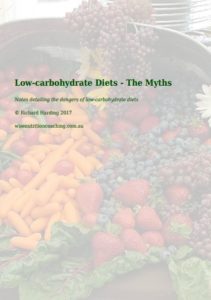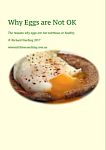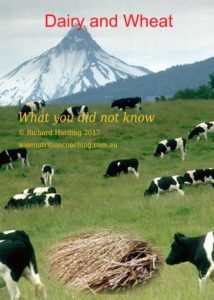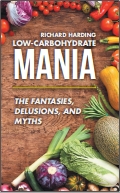Tag: dairy
-
Animal and Plant Protein – Lysine and Arginine
Lysine is an indispensable dietary amino acid for all vertebrates and is required for protein synthesis.
The arginine requirement is influenced by many factors that vary between species. There is an antagonism that can occur between lysine and arginine in some species where excessive intakes of one of these amino acids will adversely affect the metabolism of the other amino acid thereby increasing its requirement.
Lysine is a dietary indispensable amino acid.
Lysine is the first limiting amino acid in most grain and cereal-based diets so it also defines the protein required to meet the amino acid requirements..
Human milk is supplied to babies when the need for protein is at the greatest. Babies double in size during the first 6 months of our lives. The ideal food for a baby is mum’s milk where 5% – 6.5% is protein. This should offer reassurance that as long as we a consuming an adequate diet, we do not need a high protein diet.
Read more ⇒ -
Comparison of Dairy Milks with Human Milk
Milks are complex lipid emulsions in water containing protein, fat, lactose, vitamins and minerals, as well as enzymes, hormones and immunoglobulins which provide initial immunity functions.
There is approximately 5,500 species of mammals which initially supply their young with milk. There are vast differences in milk composition among the mammal species. Of all the mammals, humans have the lowest protein content.
Mammals have evolved over millions of years to provide nutrition for their infants in the first stage of life. There are significant difference between species depending upon factors such as rates of growth.
Proteins in human milk provide sufficient of protein to sustain infants for the first six months without any additional food, as well as supplying the means of establishing suitable environment for the growth of healthy intestinal bacteria and providing the proteins involved in the immune system.
Human milk is supplied to babies when the need for protein is at the greatest. Babies double in size during the first 6 months of our lives. The ideal food for a baby is mum’s milk where 5% – 6.5% is protein. This should offer reassurance that as long as we a consuming an adequate diet, we do not need a high protein diet.
Read more ⇒ -
The PURE Study Myths
Dr James Muecke is the Australian of the Year in 2020 which was awarded for his work as an eye-surgeon and his work in preventing blindness.
Muecke believes that we should be eating more eggs, cheese, meat and dark chocolate to minimise diabetes, its associated blindness (diabetic retinopathy) and diabetic neuropathy. Peripheral diabetic neuropathy is nerve damage of the limbs that is caused by diabetes. 50% of adults with type 2 diabetes have peripheral neuropathy. It can result in pain, numbness and an increase in sensitivity. Diabetes account for more than 80% of amputations.
Muecke cites the PURE Study to justify his low-carbohydrate, high-fat, animal-based diet.
The PURE Study is an observational study in 27 countries that examined 225,000 people. The study period is 20 years.
Read more ⇨ -
Zinc, Selenium and the Immune System
Zinc and selenium are important micronutrients required for the immune system to function effectively along with vitamins A, C, E, B6, B12, C, D, E and folic acid and the trace elements iron and copper.
Both insufficient and excessive intakes of zinc and selenium can have negative consequences on the immune status.
For the majority of people, low selenium intake is not a major issue. Whole-grains provide provide a more than adequate supply for vegans.
A serum selenium test shows a short-term status of selenium whilst red blood cell selenium reflects a long-term status.
Before consuming large amounts of selenium in foods or supplements, it is important to know the true status of your selenium.
Read more ⇨ -
Changes to our Health Indicators
Many of our health indicators have become worse over the past few decades (2000-2020). There has been a decrease in the United States in life expectancy. Below are some of the indicators that have been reduced, resulting in a society that is becoming increasing unhealthy and is placing an unsustainable burden on the families and health care facilities.
Read more ⇨ -
Rural Indian Regional Diets
Despite India's reputation for a healthy, vegetarian cuisine, it is not justified. Only 1.6% of Indians are vegan, 24% are lacto-vegetarian. 3% add eggs to their lacto-vegetarian diet which leaves 72% consuming meat.
The Indian population has the highest prevalence of diabetes worldwide and exhibits high-risk metabolic profiles at younger ages and lower body mass index than their Western counterparts. There are significant regional variations to this observation.
The reasons why Asian populations exhibit diabetes at a lower threshold than western populations are not known.
According to WHO mortality statistics, India is ranked 17 for Low Birth Rate, 37 for Diarrhoeal Diseases, 40 for Tuberculosis, 60 for Malnutrition and 62 for Influenza & Pneumonia out of 183 countries.
Given the current increase in consumption of meat and oils and a decrease in grains, the prevalence of obesity and diabetes is likely to continue.
Read more ⇨ -
Impact of Gluten-free Diets
There is a substantial difference between a standard western diet and a gluten-free diet. If a gluten-free diet is no warranted, a gluten-free diet may have unintended health consequences that are not beneficial as well as creating an additional inconvenience.
Consumption of complex carbohydrates (polysaccharides) and dietary fibre can be significantly less.
Read more ⇨ -
Wheat and Inflammation
William Davis is largely responsible for the low-wheat, low-gluten diets with the publication of his book Wheat Belly. In this book he states that we live in a ‘whole grain world’ and that wheat is responsible for the majority of our modern illnesses including wheat.
Find out what the role of wheat is in inflammation.
Read more ⇨ -
Are Healthy Diets More Harmful to the Environment
On December 14, 2015 an article titled Vegetarian and “Healthy” Diets Could Be More Harmful to the Environment was published on the Carnegie Mellon University website.
The article quotes Paul Fischbeck, a professor of social and decisions sciences and engineering and public policy at the institute.
He was a co-author of a paper Energy use, blue water footprint, and greenhouse gas emissions for current food consumption patterns and dietary recommendations in the US.
Professor Fischbeck is quoted in the website article, stating:
“Eating lettuce is over three times worse in greenhouse gas emissions than eating bacon. Lots of common vegetables require more resources per calorie than you would think. Eggplant, celery and cucumbers look particularly bad when compared to pork or chicken.”
Read more ⇨ -
Letter to Diggers – October 2018
In the Spring 2018 edition of Diggers, Bel P claims that What The Health has been “expertly torn to pieces”. No effort has been made to justify this claim. What The Health web site has listed approximately 300 references for the movie with the elapsed time that the information was presented.
In the absence of a valid critique of What The Health, I will present some evidence presented by the movie for the health benefits of a whole-food, plant-based diet. All references provided are from primary sources for which I have the paper or electronic copy.
Read more ➱
Font Resizer
Search
However, the study has been funded by the dairy and beef industries.
Discover how industry-funded research is deceiving the public.


 Carbohydrates DO NOT cause diabetes
Carbohydrates DO NOT cause diabetes
Truth and Belief
 Discover why researchers, popular commentators and the food industry is more concerned with maintaining corporate profits than ensuring that we have valid health information.
Discover why researchers, popular commentators and the food industry is more concerned with maintaining corporate profits than ensuring that we have valid health information.Who is going to get wealthy by encouraging people to eat their fruit and vegetables?
Featured Posts
Introduction2040 Documentary
Autoimmune Diseases, Biomimicry and Type 1 Diabetes
Pop Psychology, Alice and the Concept of Evil
Do Vegetarians Live Longer?
The Pioppi Diet
What is the Problem with Wheat?
Wheat and Inflammation
Impact of a Gluten-Free Diet
Wheat and William Davis
Glucose Tolerance
When Vegan Diets Do Not Work
7th-day Adventists and Moderation
Taiwan, Buddhists and Moderation
Worried about eating eggs?
CSIRO and Egg Consumption
How Cooking Changed Us
Deception from The BMJ
The Fund-raising BBQ
Endometriosis is Curable
Changes to our Health Indicators
Cause of Type 2 Diabetes
Center for Nutrition Studies

